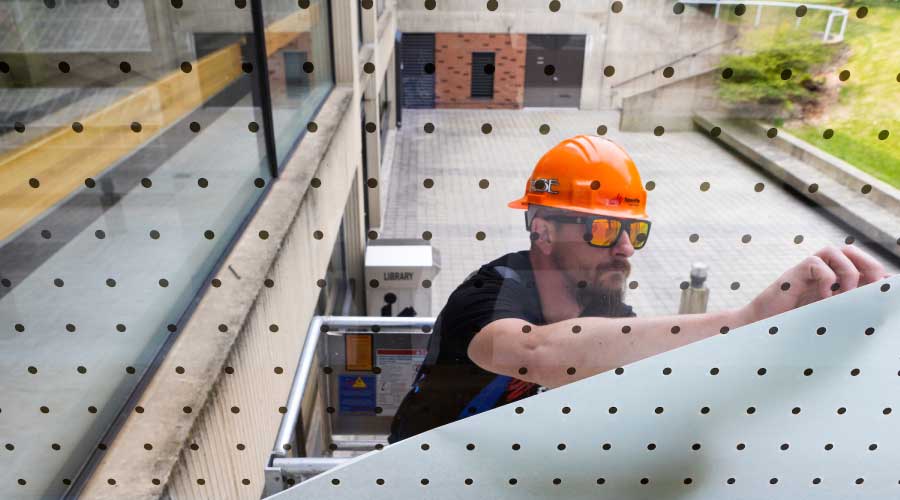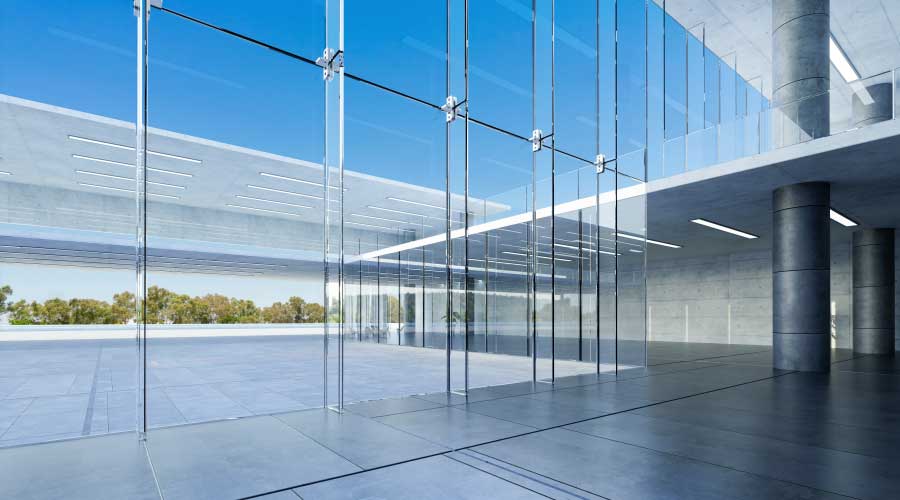Building Envelopes Affect Energy Use, so Make Sure Yours Isn't Just a Pretty Face
The explosion of green options for the built environment can create a tremendous amount of confusion for the building owner or facility manager when faced with implementing repairs or upgrades to a building's exterior envelope. Identifying and selecting the appropriate criteria for evaluating cladding repair or upgrade options can be difficult. A systematic approach is critical in terms of identifying and evaluating criteria to consider when making decisions regarding what to use and how to implement building envelope improvements.
The first step in this process is to evaluate the performance of the current envelope. Air infiltration, water penetration and thermal performance levels can be determined through field testing, investigation and evaluation. These initial steps establish a baseline from which alternative solutions can be measured and set the expectations for the amount of improvement that can be achieved.
New energy codes and standards are good references for the minimum performance levels of exterior cladding. One of the general goals for the development of the new ASHRAE Standard 189.1 "Standard for the Design of High-Performance Green Buildings" was setting design requirements that would result in an overall average of 30 percent energy use savings compared to ASHRAE Standard 90.1-2007. Based on energy modeling results by the National Renewable Energy Lab and the U.S. Department of Energy, this goal was achieved based on an overall average of building stock and climate zones across the U.S. The thermal performance requirements have increased significantly in the 2009 International Energy Conservation Code (IECC) as well. This code specifies required U-values for residential and commercial fenestration and R-values for walls in various climate zones of the United States. These climate zones are delineated from 1 at the southern tip of Florida and Hawaii to 7 in northern Minnesota and Alaska, with some of the more severe boroughs of Alaska located in zone 8. Typical required U-values for fenestration range from 1.2 in zone 1 to 0.35 in zones 5 through 8. A review of this code will provide a benchmark as to the current requirements for thermal performance and air infiltration of the exterior building envelope. To understand how the performance of the existing cladding compares with current minimum standards, these values can be compared to the values that were obtained during the initial cladding evaluation discussed above.
For example, if the investigation finds that the building's insulation levels are near the code requirements, perhaps only moderate thermal improvement can be expected through the addition of thermal insulation. Conversely, if the investigation reveals amounts of air infiltration that are well above the currently allowable levels, the sources of the air infiltration may be identified and addressed resulting in significant energy savings. This targeted approach to improving the performance of the exterior cladding can provide cost-effective solutions to building problems.
Money, Money, Money
The second step in identifying appropriate repair or upgrade options is to establish a budget and an expected return on the investment (ROI).
Once the expected level of performance of the cladding has been determined and an expected life for the repairs or upgrades has been established, options for a scope of work designed to meet these criteria can be explored. With some exceptions, there is a correlation to initial cost and life expectancy. Exterior sealant repairs have an estimated life of seven to 10 years depending on the sealant type. Depending on the problems discovered in the exterior evaluation, these repairs can be relatively inexpensive, but have a large local effect on air infiltration or water leakage performance of the envelope while having little to no effect on the aesthetics of the building. Because wet insulation does not perform as well as dry insulation, eliminating water leaks into the building envelope will also improve the thermal performance of the envelope.
If the evaluation indicates that there is insufficient or missing insulation, this can be a relatively inexpensive repair relative to the improved level of performance. Prior to adding insulation to an exterior wall, a thorough analysis of the existing insulation and its relationship to any air, vapor and moisture barrier/retarder should be conducted. Adding insulation to the wall construction on the wrong side of these membranes may create conditions where condensation may occur within the wall. Instead of enhancing the overall performance, this condition could then reduce the overall performance of the wall and possibly accelerate the deterioration of the building's components.
If the analysis indicates that there is sufficient space to add insulation in the correct relationship to the internal membranes, this can be a cost-effective method of improving the thermal performance of the exterior wall. New, permeable spray-on foam insulations can work well in remodeling situations and can be applied in cladding areas with somewhat limited access, thus removing the necessity of stripping the interior or exterior cladding. The addition of thermal insulation can be especially cost-effective while remodeling spaces. Care should be taken when specifying and installing these products because many of these formulas have expansive properties that may deform some building components if the potential expansion of the foam is not anticipated and safely accommodated for.
Other cost-effective opportunities to improve the performance of the building envelope arise during regularly scheduled repairs. Roof membranes must be replaced periodically. Generally, this is an optimal time to evaluate and improve a roof's thermal performance. At a minimum, the Solar Reflective Index (SRI) should be reviewed in order to have optimal reflectance. The trend in the United States is toward higher reflectance to reduce cooling loads. Cities like Chicago in climate zone 5 now require new membranes to provide minimum SRI values to reduce the heat island effect caused by acres of black asphalt roofs and other dark surfaces.
The installation of increased amounts of thermal insulation should also be considered during roof replacement. If additional insulation is added, it may affect the overall thickness of the roof construction. If it is not addressed in the design of the roof, the additional thickness of the roof may cause some complications around perimeter walls, drains, mechanical curbs, and penthouse doors and walls. While these details can be addressed, it is best to have them planned for prior to the day that the roof is being installed.
If a vegetated roof is being considered, the additional weight must also be considered. The soil will hold moisture on the roof for extended periods of time. Special roof membranes that are designed and warranted for prolonged exposure to moisture should be used. Because locating future leaks in a soil-covered roof can be difficult, new covered roof systems should include the capability for conducting electronic vector mapping. These electronic tests should be conducted prior to and after installing the growing medium and vegetation. This mapping will provide the building owner with a high level of comfort that the roof was installed correctly and that it was not damaged during the installation of the vegetation. In the event that a leak does occur in a properly designed roof, these systems can be very effective in identifying the location of the breach.
Related Topics:












